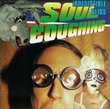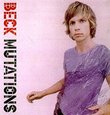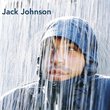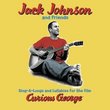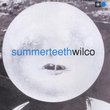| All Artists: Plants & Animals Title: La La Land Members Wishing: 2 Total Copies: 0 Label: SECRET CITY RECORDS Original Release Date: 1/1/2010 Re-Release Date: 4/20/2010 Genres: Pop, Rock Style: Number of Discs: 1 SwapaCD Credits: 1 UPC: 680341140025 |
Search - Plants & Animals :: La La Land
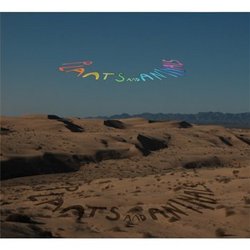 | Plants & Animals La La Land Genres: Pop, Rock
It's not easy to label the kind of music Plants and Animals make, but it's easy for it to feel instantly familiar. Maybe that's because they record to tape, and their records sound like they could have been made in 1972. B... more » |
Larger Image |
CD Details
Synopsis
Album Description
It's not easy to label the kind of music Plants and Animals make, but it's easy for it to feel instantly familiar. Maybe that's because they record to tape, and their records sound like they could have been made in 1972. But for all their analog warmth, it's also impossible to deny how raw and recent the songs sound, and harder still to find anything else that sounds quite the same. Anyone who took their debut, Parc Avenue, into their home and hearts probably already knows this. Since that album was released in early 2008 the band has played over 100 shows, circling the Western world more than once, including appearances at the Pitchfork Festival in Chicago, Primavera in Barcelona, Central Park Summer Stage with the National, and even one night in Columbus opening for Gnarls Barkley, after Danger Mouse discovered Parc Avenue and invited them out. But regardless of where it happened, anyone who has seen the three of them perform live knows that their big sound isn't some kind of studio wizardry. Plants and Animals are Warren C. Spicer, Matthew `the Woodman' Woodley, and Nicolas Basque, the product of a musical three-way between two boyhood friends from Canada's East Coast, and a French-Canadian. As their name suggests, the band has been a creature of evolution from the start. Its first incarnation was entirely instrumental, with loose song structures that built sound around themes and came out like epic folk music. By the time Parc Avenue was complete, Warren was singing and some of the songs were even under four minutes. The only thing that has really remained constant from the beginning is the attention paid to detail in the recording process--whether it be editing tape with razor blades, or spending a whole day micing the drums. Plants and Animals latest offering, La La Land, is louder, and tougher, but also showcases them their smoothest and most cohesive to-date. Inspired by a rediscovery of electric guitars, amplification and fuzz pedals, it takes us up and away from Parc Avenue's Montreal-in-the-summer vibe, and out into the rock n' roll ether. The album was recorded at the band's home-base studio in Montreal, The Treatment Room, and at Studio La Frette outside Paris, a brokedown old mansion filled with vintage gear and a killer board in the cellar instead of wine. Though plenty of wine went into the album. As Warren puts it, "the Paris stuff is like a nice Bordeaux and the Montreal stuff is more like a baked potato. Sessions in Paris ended by 10pm, sessions in Montreal by 6am." Rum and cokes inspired the initial Treatment Room sessions in late 2008. The album's first track, "Tom Cruz," eventually came out of these late nights. As the Woodman tells it, "it was December, pre-Christmas, so we fuelled the session with rum and cokes. They made us feel like Tom Cruise. It gave us killer smiles and made our enemies wither." Ultimately it's this sense of hilarious confidence that currently characterizes Plants and Animals, and also gives La La Land its cohesion. The Woodman's drums sound bigger and groovier, Nic colours the album with extra guitars and keyboards like a mad painter, and Warren's vocals have taken even more ambitious strides. In many ways La La Land is just as eclectic as Parc Avenue, from California coast vibes to Montreal winters and Spanish trains. But there's something more mature holding it all together now. As they might say in the movies, La La Land isn't a place--it's a state of mind. Plants and Animals have never been a band with much interest in posturing or unnecessary theatrics, but on La La Land the curtain isn't just pulled back, it's gone entirely.
Similarly Requested CDs
| They Might Be Giants Flood Genres: Alternative Rock, Pop, Rock Label: Elektra / Wea | |
| Soul Coughing Irresistible Bliss Genres: Alternative Rock, Pop, Rock Label: Warner Bros / Wea | |
| Beck Mutations Genres: Alternative Rock, Folk, Pop, Rock Label: Geffen Records | |
| Jack Johnson Brushfire Fairytales Genres: Alternative Rock, Folk, Pop, Rock Label: Umvd Labels | |
| Whigs Mission Control Genres: Alternative Rock, Pop, Rock Label: ATO RECORDS / RED | |
| They Might Be Giants Apollo 18 Genres: Alternative Rock, Pop, Rock Label: Elektra / Wea | |
| Reel Big Fish Turn the Radio Off Genres: Alternative Rock, Pop, Rock Label: Umvd Labels | |
| Wilco Summerteeth Genres: Country, Alternative Rock, Pop, Rock Label: Reprise / Wea | |

 Track Listings (11) - Disc #1
Track Listings (11) - Disc #1
